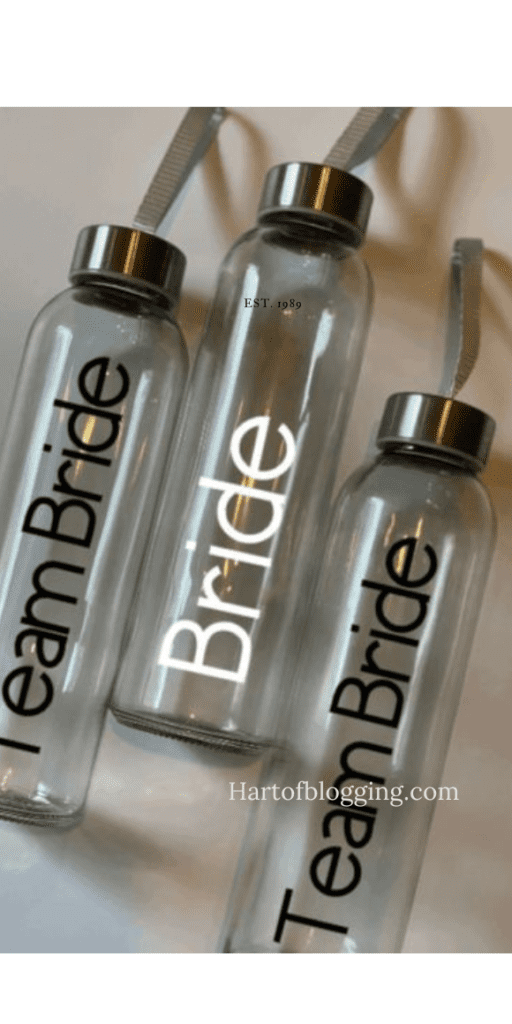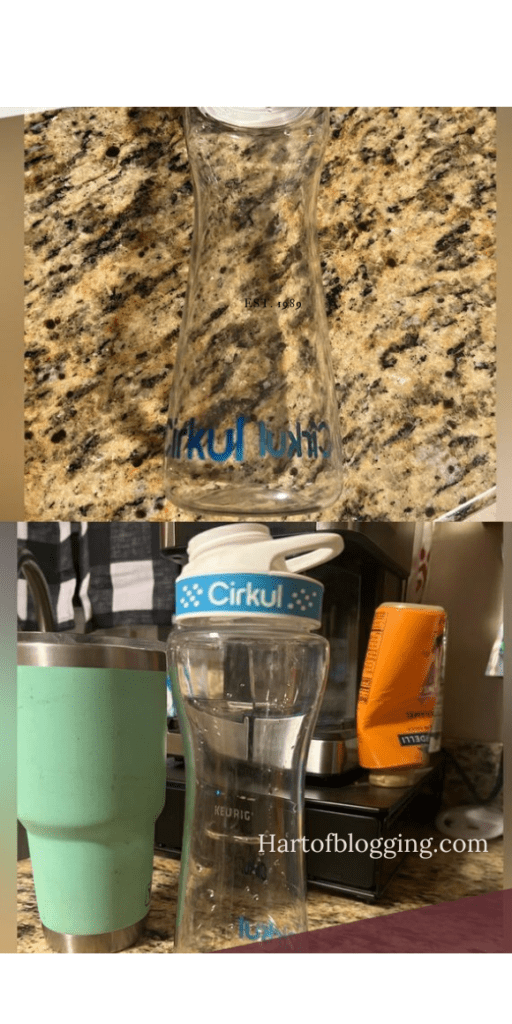“Water Beads“: A World of Colorful Possibilities
Water beads, often referred to as hydrogel beads or water crystals, are captivating little gems that have taken the world by storm. These tiny, super-absorbent polymers are a versatile addition to various facets of life. In this article, we will delve into the fascinating realm of water beads, their applications, and how they are making waves in multiple industries.

Table of Contents
Water beads are small, spherical polymers that can absorb and hold a significant amount of water. Originally developed for agricultural purposes, they have evolved into a multifunctional wonder. These beads come in a variety of sizes and colors, providing endless creative opportunities.
What Are Water Beads in Detail?
Water beads, sometimes called hydrogel beads or water crystals, are fascinating and versatile materials with a wide variety of applications. To understand them in detail, let us look at their structure, properties and uses.
Composition:
Water beads are primarily made of a superabsorbent polymer known as sodium polyacrylate. This polymer has the extraordinary ability to absorb and retain large amounts of water. When dried these pearls appear as small, hard pellets. However, when exposed to water, they undergo a remarkable change. The sodium polyacrylate within them rapidly absorbs water and swells, turning the beads into soft, translucent, and jelly-like shells. This ability to hold water is what differentiates water pearls from ordinary materials.

Properties:
- Superabsorbent Nature: The distinctive feature of water pearls is their superabsorbent nature. They can absorb several times their own weight in water, making them incredibly efficient at retaining moisture.
- NON-TOXIC AND SAFE: Water beads are generally non-toxic and safe to handle, although it is necessary to follow safety guidelines, especially when used around children or pets. The non-toxic nature of these beads makes them suitable for a variety of applications.
- Biodegradable: Many water pearls are biodegradable, meaning they break down naturally over time. This characteristic makes them an eco-friendly choice for certain purposes.
- Versatile: Water pearls are incredibly versatile. Their ability to absorb and release water makes them useful in a variety of contexts, from decorative purposes to educational activities.
How They Work:
The science behind water beads is interesting. When they come in contact with water, the sodium polyacrylate within the beads attracts water molecules and holds them. As this happens, the polymer expands, forming a gel-like substance that encapsulates water. This gel efficiently retains moisture, keeping the pearls hydrated for a long time.
Applications:
Water beads have a wide range of practical applications, including:
- Decorative Uses: Water beads are popular in floral arrangements and centerpieces. They can add a touch of vibrant color and beauty to a variety of settings, making them a versatile choice for event decor.
- Gardening: In gardening, water beads can be used to retain moisture in the soil, reduce the frequency of watering, and help plants thrive.
- Sensory Play: Water beads are excellent sensory tools, providing a unique tactile experience for sensory play and therapy.
- Educational Tools: These beads are valuable for educational purposes. They can be used to teach students about concepts such as water absorption, osmosis and the properties of polymers in a practical and engaging way.
- Decorations & Arts: Water beads can be incorporated into arts and crafts projects, providing a new and visually appealing element to creative endeavors.

In conclusion, water pearls are a remarkable material made from superabsorbent polymers, mainly sodium polyacrylate. They can absorb and hold significant amounts of water, and expand into soft, jelly-like shells. Their diverse range of applications, safety and eco-friendly features make them a valuable addition to a variety of settings, from home decoration to educational and gardening contexts.
The Many Uses of Water Beads

The Science Behind Water Beads:
Understanding the science behind water pearls is important to appreciate their unique properties and how they work. Water pearls are not only attractive to look at; They are also fascinating from a scientific point of view. Here’s a detailed explanation of the science that underlies these remarkable little fields.
1. Sodium Polyacrylate – The Superabsorbent Polymer:
The main component of water beads is a superabsorbent polymer called sodium polyacrylate. This polymer is made through a polymerization process that combines acrylic acid with sodium hydroxide. The result is a network of long polymer chains that have a high affinity for water.
2. Hydrophilic Nature:
Sodium polyacrylate is hydrophilic, which means it has a strong attraction towards water molecules. This property is essential to understanding how water beads function. When sodium polyacrylate dries, it appears as small, hard, granular particles.
3. The Absorption Process:

Magic happens when these dried grains come in contact with water. Due to its hydrophilic nature, sodium polyacrylate molecules start interacting with water molecules. They essentially “grab” water molecules and hold them.
4. Formation of a Gel-Like Substance:
As sodium polyacrylate absorbs water, it undergoes a dramatic change. The individual polymer chains expand and swell as they continue to attract and hold water. Due to this expansion the particles become larger and acquire a gel-like consistency. This gel is made up of a network of interconnected polymer chains with water trapped within them
5. Water Retention:
The resulting gel structure is notable for its ability to retain water. It can hold a lot more water than the original dry grains. The trapped water is held securely within the polymer network, preventing it from evaporating quickly. This unique property allows the water beads to remain hydrated and maintain their jelly-like state for a long period of time.
6. Reversible Process:

One attractive aspect of water beads is that this absorption process is reversible. When the beads are taken out of water or kept in dry conditions, they slowly release the absorbed water. This allows the beads to shrink and return to their original dry state ready for reuse.
Practical Applications:
The science behind water beads is put to practical use in a variety of applications from gardening to education and decoration. Due to their ability to absorb and retain water, these beads are used in horticulture to improve soil moisture retention. They are also used in decorative arrangements and as educational tools to teach concepts such as water absorption and osmosis.
In short, the science behind water beads is a demonstration of the attractive properties of superabsorbent polymers, specifically sodium polyacrylate. Their hydrophilic nature and formation of gel-like structure upon water absorption is the driving force behind their functionality, making them a versatile and attractive material in various fields.
Choosing the Right Water Beads
It is essential to select the appropriate water beads for your needs. Factors to consider include size, color and purpose of use. Whether for decorative, gardening or educational purposes, the right choice can enhance the experience.
Caring for Water Beads:
Caring for water pearls is a straightforward process, and mainly involves maintaining their hydration and ensuring that they remain clean and free of contaminants. Here is a detailed explanation of how to care for water pearls:

1. Hydration Maintenance:
Water pearls are at their best when they are fully hydrated. To keep them in optimal condition, follow these steps:
- Regularly check the water level in the container or arrangement where the water beads are placed.
- If you notice that the water particles are shrinking or getting smaller, it is a sign that they are becoming dehydrated. Add more water to rehydrate them. You can pour water directly into the container, or you can remove the beads and soak them in water until they return to their full size.
- Water beads can usually last for several weeks before dehydration sets in. The exact duration may vary depending on factors such as humidity and surrounding environment.
2. Avoid Contaminants:
To ensure the longevity of your water pearls and maintain their cleanliness, be careful of contaminants:
- Keep the water used for hydration clean. Tap water is generally suitable, but avoid using water that may contain impurities or contaminants that could affect the pearls.
- If you’re using water beads for plant hydration or decoration, take care to keep them away from potential contaminants like soil, dust or debris. These may affect the appearance and cleanliness of the pearls
3. Store Properly:
When not in use, store your water beads properly to prevent them from becoming prematurely dehydrated:
- If you have extra hydrated water pearls, you can store them in an airtight container or a sealed plastic bag to prevent moisture loss.
- Keep stored pearls in a cool, dry place away from direct sunlight. They can become dehydrated more quickly due to extreme heat and sunlight.
4. Reuse and Refresh:
Water beads are reusable. If you find that they have become dehydrated or lost their vibrancy, you can revive them:
- Remove the dehydrated water beads from their container and soak them in water. It may take a few hours for them to fully rehydrate.
- If you are using water beads for decorative purposes and want to change their color, you can place them in a container containing a colored water solution. The pearls will absorb the colored water, giving them a new color.
5. Dispose of Responsibly:
When you no longer need your water beads, and they are no longer fit for use, you can dispose of them responsibly:

- Most water pearls are biodegradable, meaning they will break down naturally over time. You can throw these away with your regular household waste.
- Alternatively, you can use dehydrated beads as a source of hydration for plants. As they break down they can slowly release moisture into the soil.
By following these care guidelines, you can ensure that your water pearls stay in excellent condition, maintain their hydration, and be ready for re-use when needed. Proper care not only prolongs their lifespan but also ensures that they continue to serve their intended purpose effectively.
Water Beads in Gardening
Gardeners have discovered the benefits of water beads in maintaining soil moisture and reducing the need for frequent watering. These beads help plants thrive, making them an eco-friendly choice for eco-conscious people.
Water Beads in Floral Arrangements:

Water beads have become a popular choice for enhancing flower decorations, bringing a touch of creativity, color and practicality to your flower displays. This detailed description will throw light on various aspects of using water beads in flower arranging.
**1. *Introduction to Water Beads in Floral Arrangements:*
- Let’s start with an introduction to the use of water beads in flower arranging, highlighting their role in adding aesthetic value and functionality to the setup.
2. Types of Water Beads for Florals:
- Discuss the different types of water beads available, such as clear, colored, and even scented options, and how to select the right type to complement your flower arrangements.
3. Preparing Water Beads:
- Explain the process of preparing water beads, including hydration instructions, and emphasize the importance of giving them enough time to expand.
4. Choosing Colors:
- Explain the importance of selecting water bead colors that complement the overall theme of the flowers or arrangement.
5. Vase Selection:
- Provide guidance on choosing the appropriate vase or container for your floral arrangement with water beads, considering factors such as size and transparency..
6. Arranging Flowers:
- Discuss tips and techniques for arranging flowers in a vase with water beads, ensuring a balanced and visually appealing display.
7. Water Beads as Water Source:
- Explain how water beads can serve as a source of water for your flowers, keeping them hydrated and fresh for longer periods of time.
8. Layering and Positioning:
- Share insights on layering water beads and flower positioning for a variety of floral arrangement styles, from bouquets to centerpieces.
9. Decorative Elements:
- Explore creative use of other accessories in combination with decorative elements, such as candles, LED lights, or water beads to enhance the visual impact.

10. Maintenance and Longevity:
- Provides tips for maintaining the appearance and longevity of your flower arrangements with water beads, including water replenishment and bead care.
11. Themed Arrangements:
- Suggest ideas for creating theme-based flower arrangements using water beads, such as seasonal, holiday, or event-specific themes.
12. Care for the Environment:
- Address the eco-friendliness of water beads and how they compare to traditional floral arrangement materials in terms of environmental impact.
13. Real vs. Artificial Flowers:
- Discuss the suitability of water beads for both real and artificial flowers, highlighting the advantages and disadvantages of each choice.
14. Visual Appeal and Unique Features:
- Explore the visual appeal of water beads in floral arrangements, emphasizing their unique characteristics, such as the illusion of floating flowers.
15. Conclusion:
- Summarize the main points of the use of water beads in flower decoration, highlighting their versatility and the creative opportunities they provide.
This comprehensive explanation of water beads in flower arranging will guide readers in creating stunning, long-lasting displays that are not only attractive to look at but also useful in keeping flowers fresh and hydrated.
Water Beads in Home Decor
Home decorators have found water beads to be a great addition to vases and centerpieces. Their ability to enhance aesthetics while keeping plants hydrated is a win-win.
Sensory Play with Water Beads
Water beads are a sensation in the world of sensory play. Their smooth texture and vibrant colors appeal to children’s senses, making them a valuable educational and entertaining tool.
Water Beads in Medical Applications
In the medical field, water beads are being used in wound care to maintain a moist environment for healing. Their biocompatibility and water retention properties make them a promising solution.
Eco-Friendly Aspects of Water Beads
Environmentally conscious people are happy to know that water beads can reduce water consumption, making them environmentally responsible. Their reusability contributes to a sustainable lifestyle.

Water Beads and Education
Teachers have found Water Beads to be an excellent teaching aid. These are used to explain concepts like absorption, polymers, and hydration, making learning engaging and fun.
Safety Considerations with Water Beads
Although water pearls are generally safe, it is important to handle them responsibly. They can pose a danger to small children and pets, so proper storage and supervision is essential.
Conclusion
Water beads are a testament to human innovation, offering a world of possibilities in gardening, decorating, education and more. Due to their attractive ability to absorb and release water, they have become indispensable in various industries. As you explore the diverse applications of water beads, remember to use them responsibly and sustainably to get the most out of these remarkable creations.
FAQs
- Are water beads safe for kids?
Yes, but supervision is necessary to prevent any choking hazard. - Can I reuse water beads?
Absolutely, just make sure they are properly cleaned and hydrated. - How long do water pearls last in floral arrangements?
They can keep flowers fresh for several weeks. - Do water pearls come in different colors?
Yes, they are available in a wide range of vibrant colors. - Are there any eco-friendly aspects of using water beads?
Yes, they can reduce water consumption and are reusable, thereby contributing to eco-friendliness.

good information…… give me a lots
انواع صورتحساب فروش